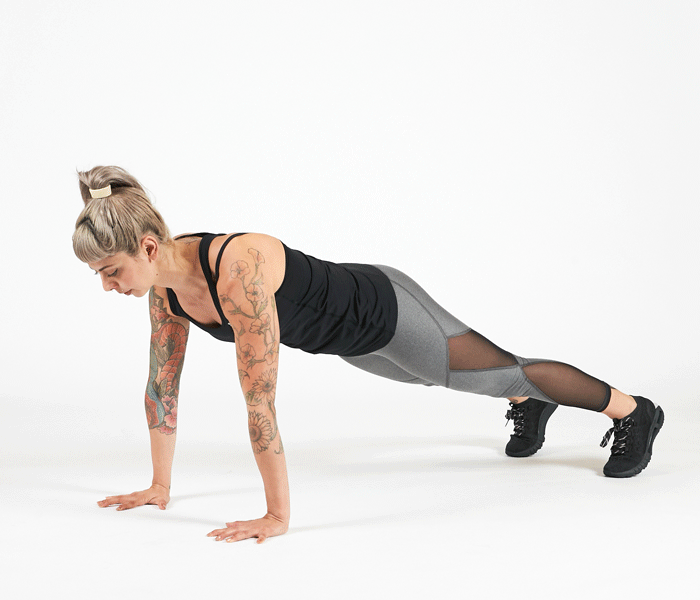Cardiovascular disease risk is usually assessed through a treadmill test, putting participants through their paces to determine how well their hearts respond to high-intensity exercise.
This kind of cardio stress test determines blood flow and cardiac electrical activity in a controlled environment and gives a physician and patient a good indication of how well someone’s heart works.
But a recent study suggests there might be an easier way to predict heart health: pushups.
DROP AND GIVE ME 40
Researchers looked at more than 1,000 active, middle-aged male firefighters over a 10-year period, tracking how well they did on a standard treadmill exercise test as well as a pushup capacity test.
The participants who were able to do 40 pushups or more at the start of the decade showed a 96% reduced risk of cardiovascular disease events compared to those who could do fewer than 10 pushups.
Especially notable was that these pushup kings had lower cardiovascular disease issues than those who showed strong aerobic capacity on the treadmill exercise tests but low pushup numbers.
PUTTING RESEARCH IN PERSPECTIVE
Like most studies, this research has its limitations. For example, it was only done on men, and fit ones at that — you don’t get to be a firefighter without building up some major cardio capacity.
But lead researcher Dr. Justin Yang, at the Harvard T.H. Chan School of Public Health, says the findings emphasize the importance of assessing different types of fitness ability.
“This could be a way to help understand your cardiovascular disease risk,” says Yang. “But more than that, it might give you a starting point when it comes to understanding your fitness level.”

CREATING A STARTING POINT
Obviously, fitness tests aren’t new — any kid who’s had to complete the Presidential Fitness Challenge can usually share some gym class trauma stories — but what Yang is suggesting is a simple “test,” like how many pushups you can do, may give you a broader indication of your health than you might realize.
In other words, being able to do 40 pushups isn’t just about your upper-body strength or core control — it could actually be a tipoff that you have solid heart health.
Plus, it’s particularly helpful for creating a baseline you can use to set goals and build a workout program, adds James Tyler Dodge, certified strength and conditioning specialist and performance coach at Professional Physical Therapy in New York.
“Without a sense of progress, you’ll have a more difficult time staying committed to your goals,” he says. “To achieve that understanding of progress, you have to be able to measure how you’re doing.”
For example, maybe you can only do 5 pushups on your knees right now. That’s perfect, because now you can set SMART goals that let you work backward from 40 full pushups to develop a plan that sets weekly goals and gets you to an endpoint.
STRENGTH OR CARDIO?
Another reason the pushups study should grab your attention is because it highlights that strength training can be just as helpful for cardiovascular health as traditional cardio like running, cycling, swimming or walking.
In fact, one recent study of 4,000 adults suggested strength building may be even more beneficial to the heart than aerobic activities. In that research, participants who did a “static activity” like lifting weights had a lower risk of cardiovascular diseases than those who did more dynamic activity like running or cycling.
But that doesn’t mean you need to ditch cardio to have a happier heart. Researcher Dr. Maia Smith, who is in the Department of Public Health and Preventive Medicine at St. George’s University in Grenada. says both strength training and aerobic activity can boost heart health — and the best results came from those who did both types.
The American Heart Association advises adding both cardio and strength, as well as focusing on endurance, balance and flexibility. Plus, the organization adds, this mix can develop increased muscle mass — which makes it easier to burn calories and maintain a healthy weight — as well as lower the risk of injury and build stronger bones, muscles and connective tissue.
So if you haven’t tried pushups yet, maybe this is your year. Your muscles — including your heart — will thank you.




